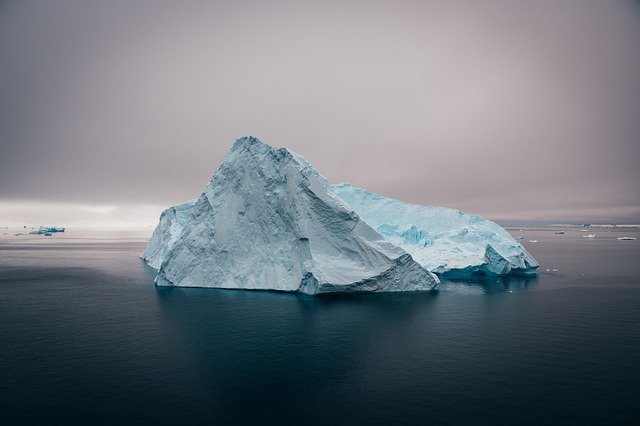Picture this: you drop ice cubes into a glass of water, and they bob right up to the top. Or think of a frozen lake in winter—fish are still swimming underneath while the ice floats above them. But here’s the puzzle: most things get heavier and sink when they freeze. Water is the strange exception.
Why does water behave this way? Why doesn’t ice sink like a rock?
The answer lies in the unusual science of water. Water molecules act in ways that are unlike almost any other liquid. Because of this, water gives us floating ice, flowing rivers in winter, and even life on Earth as we know it.
In this article, we’ll peel back the mystery of ice and water step by step. We’ll keep it simple, clear, and full of real-life examples so you’ll understand not just the “what” but the “why.” By the end, you’ll see your glass of water in a whole new way.
So let’s begin with the first big question: what makes water so unusual compared to other liquids?
The Secret Shape of Water
Water looks simple—clear, tasteless, and everywhere. But when we zoom in, water isn’t simple at all. Each tiny piece of water is called a molecule, and every molecule is made of three atoms:
- 2 hydrogen atoms
- 1 oxygen atom
That’s why we write it as H₂O.
But here’s where it gets interesting: these atoms aren’t lined up in a straight row. They form a V-shape—like Mickey Mouse’s head, with the oxygen as the “face” and the two hydrogens as “ears.” This shape changes everything about how water acts.
Tiny Charges
In this V-shape, oxygen holds electrons (the negative particles) closer to itself, making oxygen slightly negative. The hydrogens, on the other hand, are slightly positive.
This means each water molecule is like a tiny magnet—with a positive side and a negative side. Scientists call this polarity, but you can just think of it as water having “sticky ends.”
Hydrogen Bonds – The Stickiness of Water
Because of these tiny charges, water molecules love to stick together. The positive side of one water molecule is attracted to the negative side of another. This attraction is called a hydrogen bond.
It’s weaker than the bonds holding atoms together inside a molecule, but it’s strong enough to keep water molecules linked like friends holding hands.
And guess what? These hydrogen bonds are the reason for almost all of water’s weird behavior—including why ice floats.
Why Water Is Different from Other Liquids
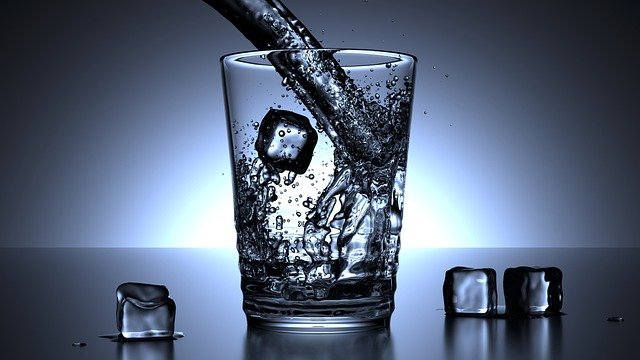
Most substances behave in a straightforward way: when they get colder, their molecules move closer together, and the solid form is denser than the liquid. That’s why solids usually sink in their liquids.
But water is a rule-breaker. When it freezes, something unusual happens:
- Instead of packing closer, the molecules arrange themselves into a special structure—a crystal lattice.
- This structure takes up more space than liquid water.
- More space means lower density.
And that’s the key: ice is less dense than liquid water, so it floats.
A Real-Life Comparison
Imagine stacking oranges in a box. In liquid water, the molecules are packed tightly and can wiggle around. But in ice, the molecules are forced into a neat, ordered pattern, leaving little empty gaps between them—like stacking the oranges with small spaces in between.
Even though the number of “oranges” (molecules) is the same, the ice version takes up more space. More space = less dense. That’s why ice is lighter than the same amount of liquid water.
So, water’s V-shape and hydrogen bonds are the secret behind its strange behavior. Without them, ice would sink, and Earth would look very different.
Why Floating Ice Matters for Life
If ice sank, the world would be a very different place. In fact, life as we know it might not even exist. Let’s explore why.
Lakes and Ponds in Winter
Imagine a pond in the middle of winter. The air is freezing cold, and the water at the top begins to turn into ice. Because ice is less dense, it floats on the surface, creating a sheet of ice at the top.
Now here’s the amazing part: this floating ice actually protects the water below.
- Ice acts like a blanket, slowing down heat loss from the water underneath.
- The water below stays liquid, even when it’s very cold outside.
- Fish, frogs, and other creatures can keep swimming safely under the ice.
If ice sank, the whole pond would eventually freeze solid, killing almost everything in it. The fact that ice floats is nature’s way of keeping aquatic life alive through the winter.
Oceans and Climate
Now think bigger: the oceans. If icebergs and sea ice sank, our oceans would slowly fill with frozen water from the bottom up. This would disrupt currents, trap heat, and destroy ecosystems.
Because ice floats, it stays on the surface. This floating ice also reflects sunlight back into space, helping to regulate Earth’s temperature. Without floating ice, the planet would heat up much faster.
Polar Animals
Floating ice is not just important for fish underwater. Animals like polar bears, penguins, and seals rely on sea ice as their home. They rest, hunt, and raise their young on this ice.
If ice didn’t float, there would be no stable platforms for these animals. Their entire way of life depends on this unique property of water.
The Bigger Picture: Survival of Life
Scientists believe that floating ice may have played a role in helping life survive during ice ages. Even when Earth was very cold, liquid water remained under layers of ice. This allowed life to continue evolving instead of being frozen away forever.
So when you see ice cubes bobbing in your drink, remember: that simple floating trick is the reason life on Earth is possible.
Everyday Examples You Know
You don’t need to look at oceans or polar bears to see this science in action. You see it at home, too:
- Ice cubes float in water and make your drinks colder.
- Frozen water bottles expand and push outwards, sometimes even cracking the bottle.
- Icebergs float in the ocean, with only about 10% above the surface and 90% hidden below.
All of these everyday sights come from water’s unusual property: expanding when it freezes.
So now we know why floating ice is more than just a cool fact—it’s a lifesaver for our planet.
Other Weird and Wonderful Properties of Water
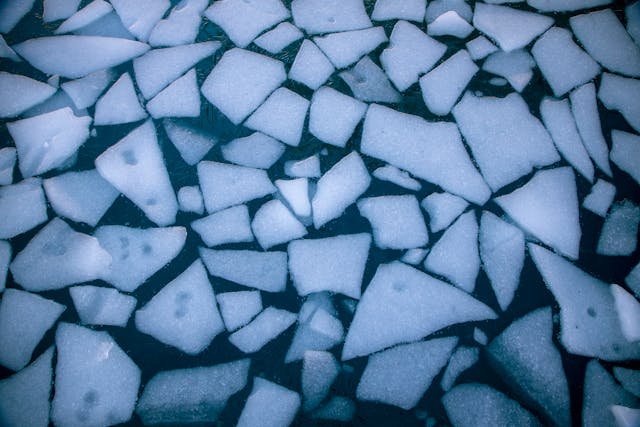
Water is not just special because ice floats. It has several other unusual behaviors that make it very different from most liquids—and without them, life would be impossible.
Surface Tension – Water’s “Skin”
Have you ever seen a water droplet sitting on a leaf, round and shiny, like a tiny crystal ball? Or maybe you’ve seen small insects walking on water without sinking. That’s because of surface tension.
Remember those hydrogen bonds we talked about? They don’t just make ice float—they also make water molecules stick strongly to each other. On the surface of water, these molecules pull tightly together, creating a sort of invisible “skin.”
This skin is strong enough for insects, like water striders, to skate across ponds. It’s also what makes droplets form instead of water spreading completely flat.
Without surface tension, water wouldn’t move through plants, and life on land would struggle to survive.
High Heat Capacity – Water as a Temperature Buffer
Another strange property of water is how much heat it can hold. Water can absorb a lot of energy before it actually gets hot. Scientists call this high heat capacity, but here’s the simple idea:
- Imagine heating a metal spoon and a pot of water at the same time. The spoon gets hot very quickly. The water takes much longer.
- That’s because water resists quick changes in temperature.
This is why coastal towns don’t get as hot in summer or as cold in winter as places inland. The ocean soaks up heat during the day and releases it slowly at night, balancing Earth’s climate.
For living things, this is essential. Our bodies are mostly water, and water’s heat-holding power helps keep our temperature steady even when the weather changes.
Evaporation Cooling – How Sweat Saves Us
Here’s another everyday example: sweat. When water on your skin evaporates, it carries heat away, cooling you down. This process is what keeps humans and many animals from overheating.
Without water’s ability to cool us through evaporation, living in hot places would be nearly impossible.
Expansion When Freezing – Ice Breaking Rocks
We already know water expands when it freezes. But here’s something cool: that expansion is also powerful enough to crack rocks.
- Rainwater seeps into tiny cracks in rocks.
- When it freezes, it expands and makes the cracks bigger.
- Over time, rocks break apart, forming soil.
This process, called weathering, is how mountains slowly turn into fertile land where plants can grow. Without it, Earth’s surface would be much harsher.
So, water’s quirks—surface tension, heat capacity, evaporation cooling, and expansion—are not just odd science facts. They are the very reasons life can exist and thrive on Earth.
Fun Experiments with Ice and Water
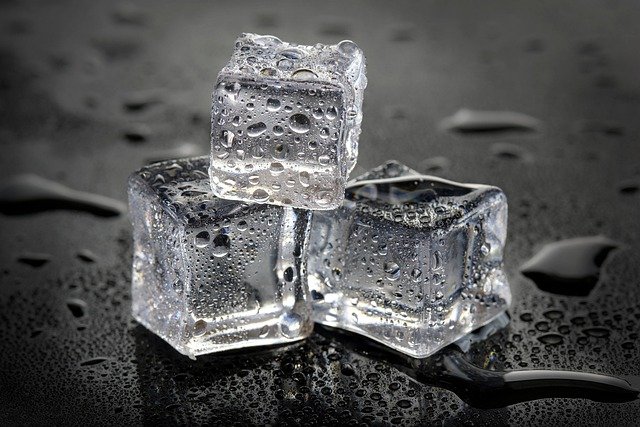
Science is always more exciting when it’s something you can touch, test, and watch change right in front of you. Here are some simple, safe experiments to explore water’s unique properties.
Experiment 1: Why Ice Floats
You’ll need:
- A glass of water
- A few ice cubes
Steps:
- Drop the ice cubes into the water.
- Watch them float at the top.
- Look closely—most of the ice is underwater, but a small part sticks out above.
What’s happening:
Ice is less dense than liquid water, so it floats. Only about 10% of an iceberg (or ice cube) is above the surface, while the rest is hidden below. This is why icebergs are so dangerous for ships—most of their bulk is invisible.
Experiment 2: The Expanding Power of Freezing Water
You’ll need:
- A plastic bottle (not glass, or it may break dangerously)
- Water
- A freezer
Steps:
- Fill the plastic bottle almost to the top with water.
- Leave a little space at the top.
- Put it in the freezer overnight.
What’s happening:
The next day, you’ll see the frozen water has pushed outward, stretching the plastic bottle. That’s because water expands when it freezes, unlike most substances. This experiment shows why pipes can burst in cold weather!
Experiment 3: Walking on Water (Surface Tension)
You’ll need:
- A small bowl of water
- A paperclip
Steps:
- Try dropping the paperclip directly in water—it sinks.
- Now gently lay the paperclip flat on the surface using a spoon or steady fingers.
- You’ll see it float, even though it’s made of metal.
What’s happening:
The hydrogen bonds between water molecules create surface tension, forming a sort of “skin” that holds the paperclip up. This is the same effect that lets insects walk on ponds.
Experiment 4: Evaporation Cooling
You’ll need:
- Two identical cups
- Warm water
Steps:
- Fill both cups with the same amount of warm water.
- Place one cup uncovered. Cover the other with a plate.
- Leave them for a few hours.
- Feel the uncovered cup—it’s cooler!
What’s happening:
As water evaporates, it takes heat with it, cooling the liquid left behind. This is the same trick your body uses when you sweat.
Why These Experiments Matter
Kids don’t just “hear” that water is strange—they see ice float, bottles expand, paperclips balance, and evaporation cool things down. These little experiments turn abstract science into real discoveries.
At Debsie, this is exactly our style: take everyday things like water, show how they behave in surprising ways, and let kids explore the “why” through guided hands-on learning.
What If Ice Sank? – Imagining a Different Earth
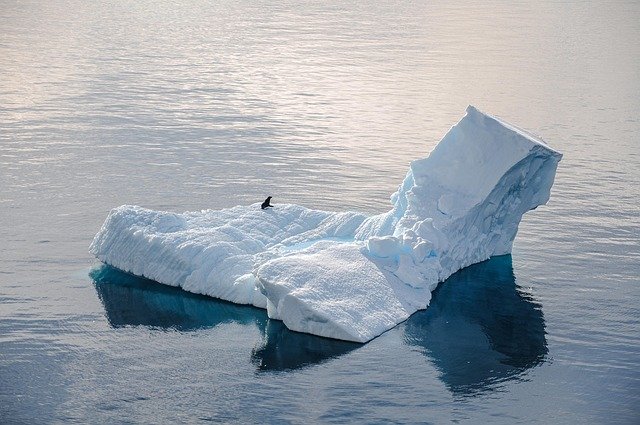
Sometimes the best way to understand why something matters is to imagine what life would be like without it. So let’s play with a “what if” question: What if ice didn’t float, but sank instead?
Frozen Lakes from the Bottom Up
If ice were heavier than water, it would sink as soon as it formed. The surface of lakes and ponds would stay liquid, but the bottom would slowly fill with ice. Over time, layer upon layer would build up, until the entire lake froze solid.
Fish, frogs, plants—everything living in water—would be trapped and destroyed. Each winter, ponds and lakes would become graveyards of ice. When spring came, they would have to start over from scratch, instead of carrying life through the seasons.
Oceans Would Change Forever
Now picture Earth’s oceans. If sea ice sank, the deep oceans would slowly freeze from the bottom upward. Ocean currents, which depend on water movement, would stop. Heat from the sun wouldn’t circulate properly. The entire climate system of Earth would collapse.
Without floating ice to reflect sunlight, the planet would absorb much more heat. This could make Earth swing wildly between frozen depths and overheated surfaces. Stable life as we know it would vanish.
No Homes for Polar Life
Polar bears, penguins, seals, and many other animals depend on floating ice as their platform. If ice sank, they would have nowhere to rest, hunt, or raise young. Whole ecosystems would collapse.
Humans Would Struggle Too
Even for humans, life would change drastically. Rivers and lakes would be blocked by frozen bottoms. Fishing, farming near rivers, and even shipping across oceans would be impossible. Civilizations might never have developed the way they did.
The Miracle in Your Glass
So next time you see an ice cube floating in your drink, think of it as more than a cooling trick. That simple floating cube is a reminder that water is special—and that without this strange property, life on Earth might never have been possible.
How Debsie Helps Kids Learn Through Water’s Strange Science

At Debsie, we believe learning should feel as exciting as watching ice cubes bob in a glass or seeing a paperclip float on water. Real science is not about memorizing hard words—it’s about curiosity, exploration, and those “aha!” moments when a child suddenly understands something they can see with their own eyes.
Making Science Hands-On
When kids learn about water at Debsie, they don’t just read, “ice floats because it’s less dense.” Instead, they test it. They drop ice into water. They freeze bottles. They balance paperclips. Suddenly, the fact isn’t just in their head—it’s in their experience. This is the kind of learning that sticks.
Teaching Problem-Solving
Sometimes experiments don’t go perfectly. Maybe the paperclip sinks, or the bottle cracks. Instead of calling it a failure, Debsie teachers guide kids to ask:
- Why did that happen?
- What can I change to make it work?
This way, kids learn to think like scientists. They develop problem-solving skills they’ll use not only in science but also in math, coding, and real-life decisions.
Building Life Skills Through Science
Water’s strange behaviors teach more than just chemistry. They also build important life skills:
- Patience – waiting for ice to freeze or water to evaporate.
- Focus – noticing small details like how much of an ice cube floats.
- Confidence – realizing “I can figure this out myself.”
- Responsibility – seeing how water affects life on Earth and why protecting nature matters.
Connecting Science to the Bigger Picture
Debsie teachers help kids see that the science of water isn’t just a classroom subject. It’s tied to real life—why fish survive in frozen lakes, why sweating cools us down, why polar ice matters for climate. When kids see these connections, they realize science explains the world around them.
The Debsie Difference
Debsie doesn’t just give lessons—we build thinkers, explorers, and creators. With expert teachers in physics, chemistry, biology, math, and more, we turn simple things like ice floating into powerful learning moments. Kids grow not just smarter, but more curious and confident in every subject they study.
The Role of Water in Everyday Life
Water isn’t just something in science books. It’s part of your life every single day. And its strange properties, like floating ice and strong surface tension, quietly support you in ways you may not notice.
In Your Body
Did you know your body is about 60% water? Every cell inside you depends on water’s unique behavior. Because water can dissolve so many substances, it carries nutrients, oxygen, and waste in and out of your cells. Without water’s “stickiness” and its ability to hold heat, your body couldn’t survive.
In Nature Around You
Plants rely on water’s surface tension and stickiness (cohesion) to pull water upward from their roots to their leaves. Without this property, tall trees couldn’t survive. Imagine Earth without forests—no shade, no wood, and no oxygen supply as we know it.
In Food and Cooking
Water’s strange heat behavior is the reason food cooks evenly. When you boil pasta, water keeps a steady temperature, so it doesn’t burn easily. When you freeze food, water expands and helps preserve it. Even ice floating in your soda makes drinks cool without sinking to the bottom.
In Technology and Daily Life
We even use water’s properties in technology. Steam engines worked because water expands when heated. Cooling systems in cars and computers use water (or water-based liquids) to carry away heat. Even your shower’s comforting warmth is thanks to water’s high heat capacity—it doesn’t turn cold too quickly.
A Hidden Hero
So, while water looks simple, it’s secretly one of Earth’s greatest heroes. Its strange science makes life possible in your body, in plants, in the oceans, in the climate, and even in your kitchen. Without it, everything would fall apart.
Conclusion – The Wonder of Water and the Power of Learning
Ice floating in a glass may seem ordinary, but it’s actually one of the greatest miracles of science. Because water expands when it freezes, because its molecules stick together, and because it breaks the rules other liquids follow, life on Earth is possible. Fish survive the winter, oceans keep their balance, forests grow tall, and even your body stays healthy—all thanks to water’s strange behavior.
But here’s the real magic: when kids learn about water this way, they don’t just memorize that “ice floats.” They see it. They test it. They understand it deeply. And that’s the kind of learning that lasts forever.
At Debsie, this is exactly our mission. We take everyday wonders—like water, rust, slime, or bread—and turn them into powerful lessons that spark curiosity. Kids don’t just learn facts; they learn how to think, explore, and solve problems. Along the way, they grow patience, confidence, and the joy of discovery.
So the next time your child drops an ice cube into a drink, remind them: they’re looking at one of nature’s greatest secrets. And with the right guidance, that same curiosity can open the door to a lifetime of learning.
👉 Ready to let your child explore the world with wonder and confidence? Book a free trial class at Debsie today—and watch them rise, just like ice floating on water.
Read Next:
